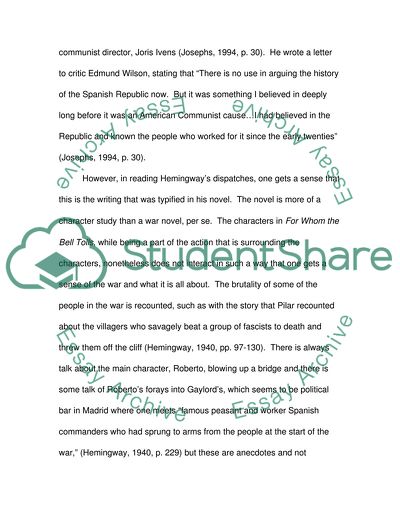Cite this document
(“Analysis of Ernest Hemingway's Novel For Whom the Bell Tolls Research Paper”, n.d.)
Analysis of Ernest Hemingway's Novel For Whom the Bell Tolls Research Paper. Retrieved from https://studentshare.org/literature/1745885-ernest-hemingways-1940-novel-set-during-the-spanish-civil-war-for-whom-the-bell-tolls-and-actual-contemporary-reporting-of-that-conflict
Analysis of Ernest Hemingway's Novel For Whom the Bell Tolls Research Paper. Retrieved from https://studentshare.org/literature/1745885-ernest-hemingways-1940-novel-set-during-the-spanish-civil-war-for-whom-the-bell-tolls-and-actual-contemporary-reporting-of-that-conflict
(Analysis of Ernest Hemingway'S Novel For Whom the Bell Tolls Research Paper)
Analysis of Ernest Hemingway'S Novel For Whom the Bell Tolls Research Paper. https://studentshare.org/literature/1745885-ernest-hemingways-1940-novel-set-during-the-spanish-civil-war-for-whom-the-bell-tolls-and-actual-contemporary-reporting-of-that-conflict.
Analysis of Ernest Hemingway'S Novel For Whom the Bell Tolls Research Paper. https://studentshare.org/literature/1745885-ernest-hemingways-1940-novel-set-during-the-spanish-civil-war-for-whom-the-bell-tolls-and-actual-contemporary-reporting-of-that-conflict.
“Analysis of Ernest Hemingway'S Novel For Whom the Bell Tolls Research Paper”, n.d. https://studentshare.org/literature/1745885-ernest-hemingways-1940-novel-set-during-the-spanish-civil-war-for-whom-the-bell-tolls-and-actual-contemporary-reporting-of-that-conflict.


